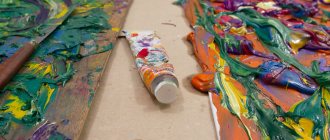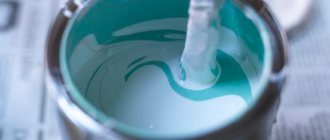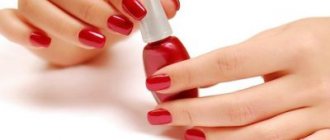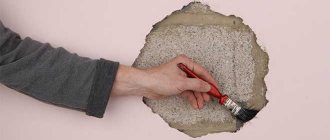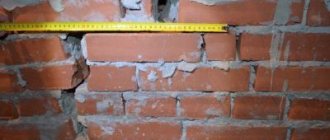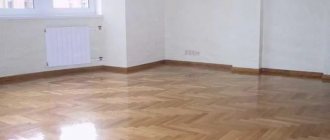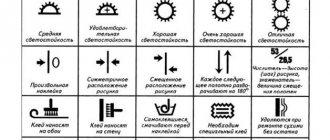Using water to dilute acrylic paint: proportions and features
If you decide to dilute acrylic with water, you should know what proportions and what results will be given. There are several dilution options. Water is added in the following quantities:
- 1 to 2, adding two parts of water will lead to the formation of a liquid consistency, and will be applied with smudges, the problem is solved by choosing a fluffy brush, several layers will have to be done;
- 1 to 1, you get optimal density, the layer will be bright. Painting is done in one layer;
- 1 to 5, a similar dilution is used to tint individual elements, the coating will be barely noticeable.
Modern acrylic paints supplied with paintings by numbers use a slightly different composition. Therefore, they are easy to wash and need to be diluted with a small amount of liquid. It should not exceed 10%.
Dilution
Acrylic paint can be thinned to create different consistencies and colors when painting, allowing you to achieve effects that would not otherwise be possible. All it takes is a few basic thinning techniques. Keep in mind that acrylic takes 10-30 minutes to dry; professional quality acrylic often takes longer to dry than low-quality acrylic. Since this is a fast-drying type of paint, using too much of the substance can result in costly waste. To avoid this, you should start with a small amount of paint, adding more if necessary.
After thinning the paint only slightly, you need to take the brush and dip it in water. Too much moisture can make acrylic paint watery; too small an amount may have no effect. To significantly dilute the paint, you need to pour water into a container with paint and stir everything with a brush to the required consistency. It is important to have a paper towel to help dry your brushes. Too much moisture in the brush can seriously dilute the paint.
Advice! You need to make sure that the water is completely distributed throughout the acrylic. Failure to do so may result in clumps or incorrect color.
Causes of drying out
If the paint for paintings by numbers has dried out, then this is due to the influence of the following factors or actions.
- The manufacturer violated manufacturing technology or used low-quality materials.
- The paint container was not tightly closed. Obviously, in this case the paint dries very quickly.
- The paints were stored under conditions different from those described in the instructions. In particular, the rays of the sun have a particularly destructive effect on them.
- Paints can also dry out if painting takes too long and the lid is not closed during this time.
- The dye dries out if it is opened too often.
- Paints often dry out after the expiration date.
- If the container is damaged during transportation or use, drying out cannot be avoided.
- Paint dries faster in the fresh air than indoors (provided the lid is open).
- As already mentioned, it is undesirable to expose dyes to direct sunlight. Under their influence, the solvent in the paint evaporates faster.
Dilution
Acrylic paint can be thinned to create different consistencies and colors when painting, allowing you to achieve effects that would not otherwise be possible. All it takes is a few basic thinning techniques. Keep in mind that acrylic takes 10-30 minutes to dry; professional quality acrylic often takes longer to dry than low-quality acrylic. Since this is a fast-drying type of paint, using too much of the substance can result in costly waste. To avoid this, you should start with a small amount of paint, adding more if necessary.
After thinning the paint only slightly, you need to take the brush and dip it in water. Too much moisture can make acrylic paint watery; too small an amount may have no effect. To significantly dilute the paint, you need to pour water into a container with paint and stir everything with a brush to the required consistency. It is important to have a paper towel to help dry your brushes. Too much moisture in the brush can seriously dilute the paint.
Advice! You need to make sure that the water is completely distributed throughout the acrylic. Failure to do so may result in clumps or incorrect color.
How to dilute paint?
To dilute the selected material with water, there is no need to use complex equipment. To work you will need a simple set of devices:
- clean container of suitable size;
- drill with mixer attachment;
- small spatula (if you need to remove lumps).
Breeding scheme:
- The paint is poured into the container. The process is carried out carefully, the composition is mixed a little.
- Water is added gradually. Even taking into account the proportions specified by the manufacturer, it is better to constantly check the viscosity.
- After adding each portion, everything is thoroughly mixed. If lumps are visible, it means that uniformity has not yet been achieved.
It should be borne in mind that the volume is affected by color, so it is added diluted in liquid.
Types of thinners
Dilution of acrylic should be carried out carefully and gradually, then the desired shade and quality will be obtained. To restore dried paint or give it the necessary thickness, you can choose from two types of thinners:
- Using regular water.
Water is part of the substance, so it is good for obtaining a liquid consistency. It is worth knowing that acrylic paints and varnishes are water-repellent; therefore, after hardening, they cannot be washed off with water. For this reason, brushes and other tools should be cleaned in a timely manner so that they do not have to be thrown away afterwards; Water is part of the substance, so it is good for obtaining a liquid consistency. - Special solvents.
The choice should be made based on the brand that produced the paint itself. Manufacturers produce suitable thinners that perfectly cope with the task. Since the components used by manufacturers are different, a thinner from another company may not be suitable. When purchasing, you need to know that thinners have different effects - matte, glossy, you need to take this into account. The use of a thinner guarantees that the desired color will be obtained; it will not change after dilution. The use of a thinner guarantees that the desired color will be obtained; it will not change after dilution.
Dye dilution process
The dilution technology depends on the stage of solidification of the substance.
Dilution with water at the first stage of drying
If you find too thick dye in the jar, water will help correct the situation. Using a pipette or syringe, add 2-3 drops of clean liquid, mix and close the lid tightly. After 10 minutes the enamel will be ready for use.
Dilution at the second stage of drying
If the material has the consistency of soft plasticine or a rubber eraser, it can be softened with a proprietary thinner, which is added according to the instructions on the label.
The second way to soak hardened acrylic in a small container:
- take a toothpick;
- make 5-6 holes in the paint;
- pour boiling water and immediately drain the water;
- repeat the manipulations 2-3 times;
- pour boiling water onto the surface again, close the jar tightly and leave for 12-16 hours;
- After the time has passed, open the container and drain the water;
- mix the contents with a toothpick;
- Add boiling water in portions, slowly and smoothly, 1 drop at a time, until you get the desired consistency.
Do not shake the paint, otherwise it will become covered with lumps.
Restoring completely dried paint
Completely hardened enamel, which looks like stone, is difficult and almost impossible to melt.
Experienced craftsmen advise using a special solvent, alcohol or nail polish remover.
There is another method for restoring acrylic that is pulled out of a jar in one piece:
- remove solid material from the container;
- grind with a sharp object to a finely granulated powder;
- pour boiling water or heat in a water bath;
- mix thoroughly until smooth;
- Place in a jar and close with a lid.
To restore completely hardened enamel, you can use a special solvent.
How can I dilute it?
The following substances are used to thin the paint.
The easiest way to make acrylic paints liquid again is to dilute them with water. Do not use water containing foreign substances or impurities.
It is best to take filtered or settled liquid. It is this water that simply dilutes the dyes and does not affect their physical properties.
But water can affect the brightness and saturation of the paint when applied. Obviously, if you add too much water, the applied paint layer can become completely transparent. Also, after diluting with water, dried paints become slightly cloudy. Those who want to avoid this are recommended to use varnishes.
Specialized solvents
If the paints have dried, then solvents will help to dilute them quickly and relatively efficiently. These products may affect the physical properties of dyes - they may dry faster or slower, or become matte or glossy after drying.
On some solvent labels you can find references to the consequences of use. Therefore, they must be used strictly according to the instructions and not done after the expiration date of the product. Do not violate the rules for storing solvents.
Products such as “Art-acrylic” and “Sonnet” received good reviews. Professional artists recommend using these substances to dilute paints, rather than water. Although the use of the second substance is preferable for most people.
Thinners
They differ from solvents primarily in that they do not have clear instructions. These substances are not always purchased in specialized stores. These can include gasoline, alcohol, kerosene, solvent and even turpentine.
The simultaneous use of water, solvents and thinners is allowed. The first two are often used together.
Prevention measures
In order for the paint to continue to remain liquid and not dry out, you do not need to start unpacking the kit and opening the dyes if you do not intend to paint in the near future. If the paints have already been unpacked, then they must be carefully closed and stored in a dark place.
A good option might be a heated basement, garage, closet, or storage room.
It is also worth mentioning once again the need to tightly close the lids of containers with dyes. After each lesson, lids should be cleaned of dyes, and the same should be done with the necks of containers. Several layers of dried dye on the lid and neck will not allow the container to be closed tightly, and there will be no question of tightness.
You can’t leave dyes open for a long time, much less leave them while painting. No need to paint outdoors. As already mentioned, this speeds up the hardening of the dyes. Dirty, low-quality or dry paint brushes also do not have a beneficial effect on dyes.
Brushes should be rinsed under running water after each use and lightly wetted before use.
What to do if the paint for paintings by numbers has dried out?
One of the most popular activities for spending free time has become painting by numbers. These kits are available almost everywhere and are relatively inexpensive. Their technology is simple; children, adults, and the elderly can color them. The paint included in the kits is not the traditional and familiar gouache or watercolor - it is acrylic dye. It has its own characteristics, in particular, it dries quickly. The article below will tell you what to do if this happens.
What is the optimal amount of paint to dilute?
Diluting acrylic is a responsible and complex process. The volume of coloring agent in paintings by numbers is small, so when adding water or solvent it is necessary to choose the correct ratio of substances.
Each painter decides individually how much paint he needs to dilute. It is best to test on a damp palette. This will eliminate the possibility of rapid drying and will allow you to calculate the exact dose of materials used.
The process can be carried out directly in a small container. To do this, take a pipette or syringe, add drop by drop and mix the composition thoroughly, observing the result.
In painting, there is a rule for diluting acrylic paints: the thinner is added so that the material does not curl or have lumps.
If too thin, add a little paint.
Everyone decides for themselves how much paint they need to dilute.
How to hold a brush and make strokes?
The brush is easiest and most comfortable to hold in the same way as you hold a ballpoint pen. Your hand should have support. This is enough so that you do not get tired, and the picture turns out neat. To begin with, you should master the usual strokes: just try to paint over each numbered fragment as evenly as possible, making smooth movements with the brush from left to right (if you are right-handed), applying paint in an equal layer of thickness, without going beyond the outline.
Once you've mastered this, you can experiment with layer thickness, shading, and even dot painting if your artistic vision calls for it. For example, if you need to draw a heavy rain cloud saturated with water. After all, its lower part is rough and dark, which is well conveyed by small ripples of dots, and threads of rain descend below, which are easiest to imitate with short oblique strokes.
Preparing for work
If you decide to use acrylic dyes to achieve your goals, then you need to start preparing. Their beauty lies in their wide range of applications. You can create works of art by painting pictures, use them in repairs and decoration, and such paints can even be used for furniture restoration.
But using acrylic paint in its pure form will not bring the desired effect. Due to the thickness of the dye, the painted surface will reflect the relief pattern of the instrument with which the composition is applied. Therefore, diluted solutions are used.
Dyes are produced for various purposes: for external or internal work, for creating paintings by numbers
Therefore, when answering the question of how to dilute acrylic paint for walls, it is important to study the instructions. The thinner can be either water or acrylic solvent.
Before diluting acrylic paint with water, you need to make sure that there are no impurities in it, and the temperature is no more than 18-20o
You will need to prepare small containers for test dilution. The main thing is that you can use them to determine the amount of ingredients used.
Before diluting acrylic paint with water, you need to make sure that there are no impurities in it, and the temperature is no more than 18-20o. You will need to prepare small containers for test dilution. The main thing is that you can use them to determine the amount of ingredients used.
Experienced craftsmen identify several basic proportions for diluted paint; you can mix it in different ways after experimenting:
- When choosing a ratio of one part water to one part purchased paint, there is no longer the appearance of clots on the painting tool. The surface color is smooth and uniform, but the composition consumption is quite high.
- If the amount of water is doubled, the paint dissolves and becomes quite liquid. Completely saturates the instrument. This composition is easy to apply to a brush, ideal for smooth surfaces.
- When adding one part base to five parts water, the substance becomes too liquid. It is used to paint those elements whose texture needs to be emphasized, or parts with complex geometry are selected for painting.
- When diluted to a ratio of one to fifteen, colored water is obtained. It is used to create gradient transitions.
Related article: Features of do-it-yourself powder painting
Some manufacturers recommend using only special solvents for acrylic as a thinner. Otherwise, the paint will become like rubber. Therefore, when choosing how to dilute acrylic paint, you should carefully read the instructions.
Whatever you choose, the method for diluting acrylic is the same:
- Prepare containers of sufficient volume and measuring rulers.
- Pour the required amount of base paint into it, check the level with a ruler, and mix.
- Prepare the required volume of liquid for dilution, and check its quantity.
- Slowly add acrylic paint thinner to the base mixture, stirring continuously to obtain a homogeneous mixture.
- If you need acrylic enamel with strictly defined parameters, for example, for painting a car part, use a viscometer to determine the viscosity.
- If necessary, filter the solution.
Despite the fact that the composition is mainly water-based, once acrylic paint has dried, it is very difficult to remove. The tool used must be immediately washed in soapy water or a solvent for acrylic paints must be used. Otherwise, it will not be possible to soak the instruments; they will become unusable.
Proprietary solvent
There are special tools with different tasks. Solvents recommended by manufacturers may change the texture of acrylic paint. For example, you can make the coating matte or shiny; the properties can be read on the label.
Acrylic solvent is a colorless liquid with a characteristic odor. If you add a lot of it, the coating layer will be translucent; when diluted with a small amount, the color will remain rich. When spraying acrylic with a spray gun, it is best to use a proprietary solvent for dilution. In this case, a consistency suitable for the job and uniform application of the composition are guaranteed. The acrylic paint solvent allows you to change the shade and affects the strength and appearance of the coating. The paint should only be diluted with fresh solvent.
The compositions differ in drying time. Manufacturers recommend using a solvent with a high evaporation rate when working in cold and humid weather, and a low evaporation rate in hot weather. Solvents must , preferably in the dark and cool, in strict compliance with fire safety standards.
Some storage tips
Store paints in a dry and dark place
- Always make sure paint cans have lids on tightly.
- Do not store acrylic in the cold - this may cause it to dry out prematurely.
- Clean your brushes and palette immediately after using paint.
- If paint gets on your skin or eyes, rinse immediately with water.
- Do not mix paints from different manufacturers.
- Don’t skimp and don’t waste time on trifles - sometimes it’s better to buy new paint than to revive the old one.
If, unfortunately, some of your acrylic paints cannot be brought back to life, don’t worry. I have prepared a large stock of flowers in my store and am always ready to please you!
Choose paint on the website - and don’t forget that new paint is always much higher quality and better than “saved” paint from drying out.
Types of solvents
The most popular options are glossy and matte. They are used to improve the appearance of the coating. They are a transparent solution with a slight odor that disappears after drying. The surface is shiny, bright or, conversely, matte without gloss.
Solvent-removal. Removes dried paint from any surface and cleans brushes. It is a gel-like paste with a pungent odor. The remover is applied for 15 minutes, during which time it dissolves the acrylic and the coating can be easily cleaned. However, it will not remove paint from the skin. If it gets on the face or body, the chemical composition is immediately washed off with water.

